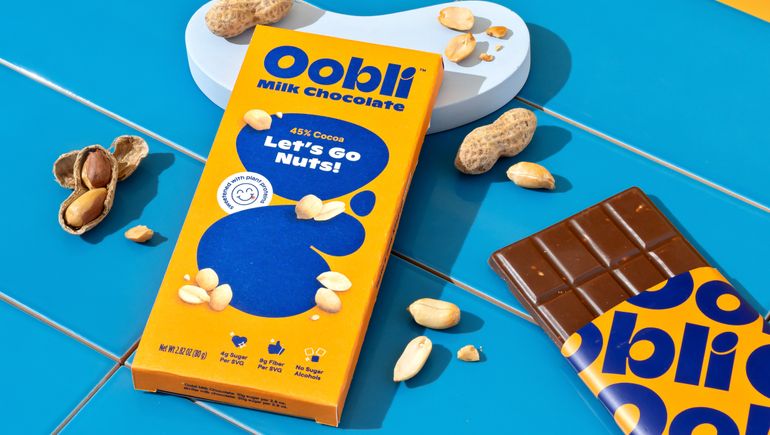Oobli’s low-sugar chocolates hint at promise of sweet protein alternatives

Consumer desire for better-for-you alternatives to sugary foods presents a meaningful opportunity for proteins sourced from exotic fruits, said Ali Wing, the founder and CEO of Oobli.
Wing launched Oobli in 2014 to create food made with fruits native to Africa. One of those is oubli, a sweet berry, which can be up to 2,000 times sweeter than sugar. The ingredients are synthesized as a protein by the body, so they do not cause blood sugar to spike.
Some of the other exotic fruits Oobli sources sweet proteins from include katemfe and the serendipty berry.
“The beauty of sweet proteins is that they take out almost 90% of sugar without you feeling like you have to make a taste tradeoff,” Wing said.
Last month, Oobli launched Oobli Milk Chocolates. They are described as the first low-sugar milk chocolate bars that do not contain artificial sweeteners such as aspartame, stevia or sucralose. The milk chocolates come in four varieties — Cocoa Dreams, Let’s Go Nuts, Almond Crunch and Crisp ‘n Rice — and contain 4 grams of sugar and 9 to 10 grams of fiber per serving.
The new items come two years after Oobli initially launched its dark chocolate bars. The sweets company relaunched them in February with a new formulation, which Wing said improved their taste. The bars contain just 1 gram of sugar per serving. Oobli also sells lower-sugar iced tea products.
With the use of sweet proteins still in a nascent stage, many consumers and industry executives are still unaware of their nutritional profile and functionality, according to the company.
Wing said Oobli’s eight years in the R&D phase provided it with insight into how sweet proteins can best be implemented into new food items. The brand consults with major players in the food and beverage industry about how it can implement sweet proteins into their foods to reduce sugar while maintaining taste.
Wing cited data that showed sugar is in 68% to 75% of all food consumed on a daily basis.
“There’s a nostalgia with sugar, it shows up in things like our favorite cereals, candies and chocolates,” Wing said. “Nobody wants to give up the tastes. But what we do want is to make them able to be enjoyed by more people.”
According to Wing, Oobli will follow up its milk chocolate launch this quarter by collaborating with major CPG food companies. The work will take place in several categories, including baked goods, dairy and confectionery items.
While Oobli’s launches are primarily concerned with identifying sweet alternatives to sugar, Wing said there is also high demand for items that contain additional protein for building muscle.
She said sweet proteins cannot replace traditional ones because they must be used sparingly to prevent them from making items too sweet. As a result, Oobli also is exploring the creation of foods that can be loaded up with other protein sources.
“This time last year, we honestly didn’t know this could be a solution in such a broad amount of products because we weren’t producing kilos of sweet protein like we are now in three countries,” Wing said.
Source: fooddive.com

